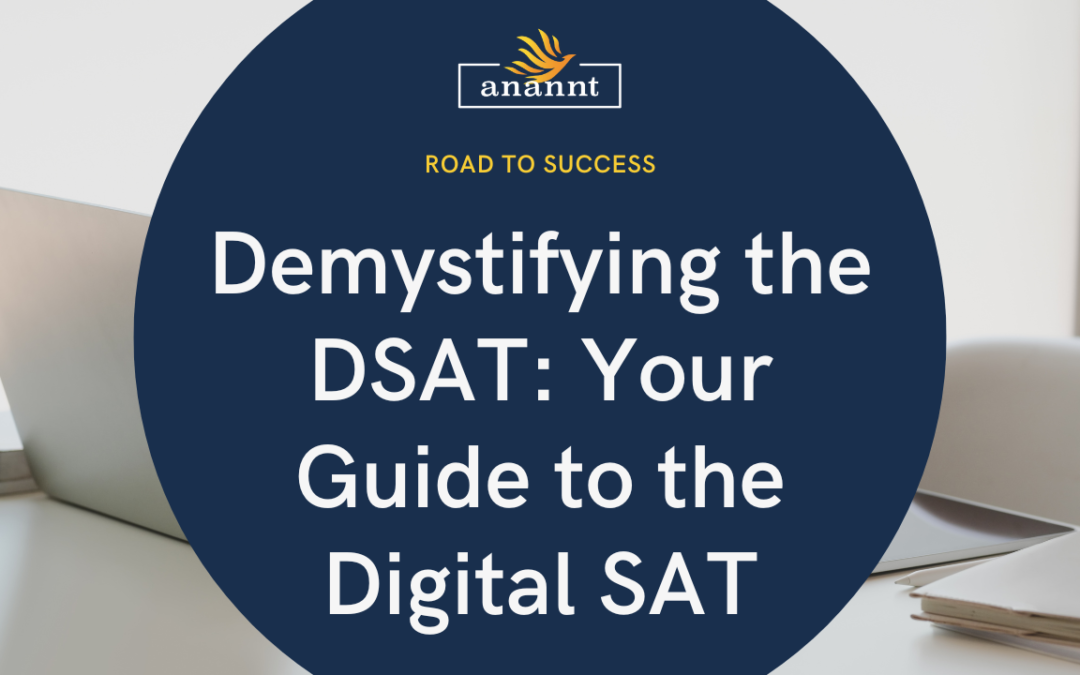The SAT, a cornerstone of college admissions for decades, has undergone a significant transformation. with the advent of the DSAT, or Digital SAT. This shift to digital SAT prep in Dubai brings a host of changes that students and parents need to understand for successful DSAT prep.
Key Changes in the Digital SAT
- Shorter and More Focused: The DSAT boasts a shorter exam time compared to the traditional model. This streamlined approach reflects the focus on core skills essential for college readiness.
- Adaptive Testing: One of the most significant changes in the DSAT is the use of adaptive testing. The exam adjusts the difficulty of questions based on the student’s performance. This creates a more personalized testing experience, allowing students to demonstrate their abilities more accurately.
- Combined Reading and Writing: The DSAT merges the Reading and Writing sections, offering shorter passages with a greater focus on understanding the context of words and their usage.
Score and Domains
The DSAT score ranges from 400 to 1600, similar to the traditional SAT. The test focuses on these key domains:
- English: The English section evaluates reading comprehension, vocabulary, grammar, and effective writing skills. Questions encompass analyzing texts, understanding word choice, and correcting errors.
- Math: The math section covers a wide range of mathematical areas, including algebra, geometry, data analysis, and problem-solving. Students are permitted to use calculators throughout this section.
Pros of the Digital SAT
- Convenience: The digital format offers more test dates and greater flexibility for students to schedule their exams.
- Faster Results: With the DSAT, students can expect to receive their scores much faster than with the paper-based version.
- Adaptive Nature: The adaptive format creates a tailored exam experience, potentially leading to a more accurate reflection of students’ skill levels.
Cons of the Digital SAT
- Digital Divide: Some students may have limited access to the technology required for the DSAT, potentially creating a disadvantage.
- Less Annotating: The digital format can make it slightly more challenging to annotate passages as one might on a paper test.
- Adjustment Period: Students and educators may need time to fully adjust to the new format and testing strategies.
Navigating the Digital SAT
To succeed on the DSAT, students should:
- Familiarize with the Format: Practice using the Bluebook™ app and sample tests to become comfortable with the digital interface.
- Focus on Foundational Skills: Solid reading comprehension, vocabulary development, and core mathematical concepts will remain essential for success.
Mastering the DSAT with Anannt Education
While the College Board offers resources, Anannt Education in Dubai provides unmatched expertise and DSAT classes in Dubai to help you excel on the DSAT, ensuring your Digital SAT prep is comprehensive and effective.
- Personalized Learning: Anannt’s analysis of your strengths and weaknesses tailors study plans specifically for you.
- Expert Guidance: Experienced tutors provide strategy sessions and breakdown complex concepts for better understanding.
- Simulated Test Environment: Anannt’s digital practice tests mimic the DSAT experience, preparing you for test day.
The Bottom Line
The DSAT marks a new chapter in college admissions testing. Understanding the changes and developing a strategic preparation plan are key to success. Anannt’s expertise can help you navigate the DSAT with confidence, maximising your potential score.
For a more in-depth exploration of our offerings, please visit our website and feel free to connect with us directly via WhatsApp for any queries or further information.


Recent Comments